(This is an element of ‘Technical‘)
Pressure increasers were first developed by William Sugg in response to the invention of the gas mantle that had so improved the position of gas lighting in the race/fight with electrical lighting that all the manufacturers were changing over rapidly. William decided that he should improve on the performance of the mantle to keep ahead of the competition. To this end he developed the high pressure incandescent burner system with both a new upright mantle and a means of increasing the mains pressure.
The existing pressure of the gas main was very low, largely determined by the weight of the gasholder that allowed gas to be produced continuously whilst the utilisation varied enormously particularly between night and day. William had developed and introduced many innovations such as the governor burner as well as many in line governors to smooth out the variation but the pressure remained low. His experiments showed that the use of a higher pressure in a properly formed aeration chamber increased the air entrainment to produce a significantly better gas/air mixture that, along with a new burner, improved the light performance considerably.
In order to increase the available pressure, William developed a number of devices, one of the most intriguing being powered by water pressure. Certain cooking appliances already made use of water motors to rotate equipment like a spit roaster – which may have inspired William.
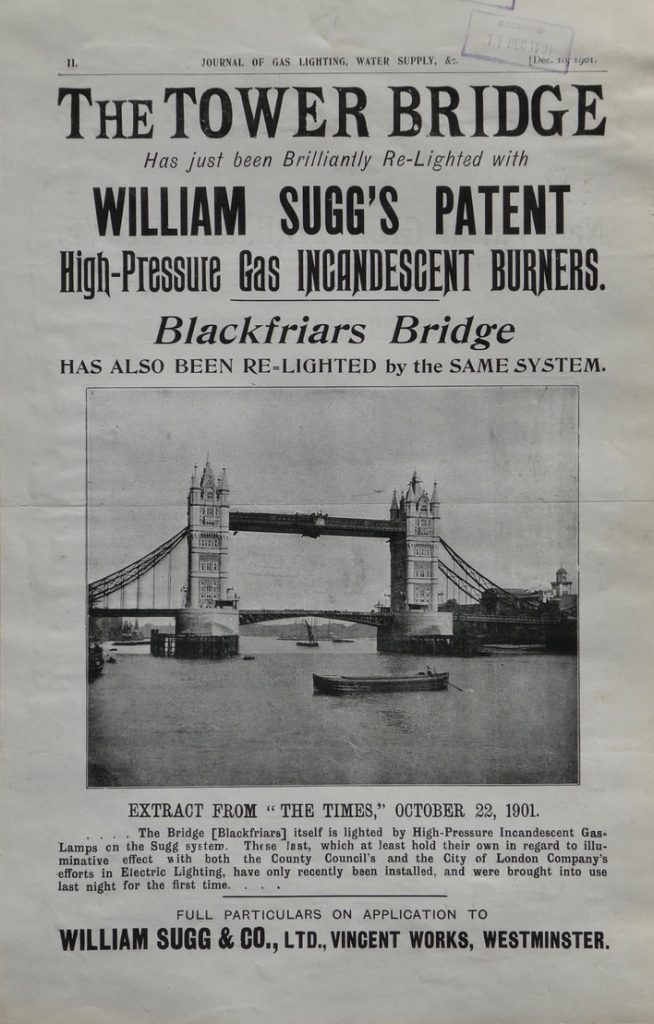
The following pages come from one of the large catalogues dated 1904, so not long after Tower Bridge and several other Thames bridges had been ‘relighted’ with this new high pressure system as you can see in the advert above from 1901 (Tower Bridge was lit by William Sugg’s when it was built and opened in 1894 and re-lit in 1901 just 7 years later.)
With apologies for the quality of the following pages which are the only ones showing these illustrations. Some of the archive collection suffered from damp but at least this gives diagrams of pressure increasers driven by a small gas engine, a belt driven version from existing shafting and one driven by steam power. The water-driven version is described opposite the small gas engine directly below this paragraph
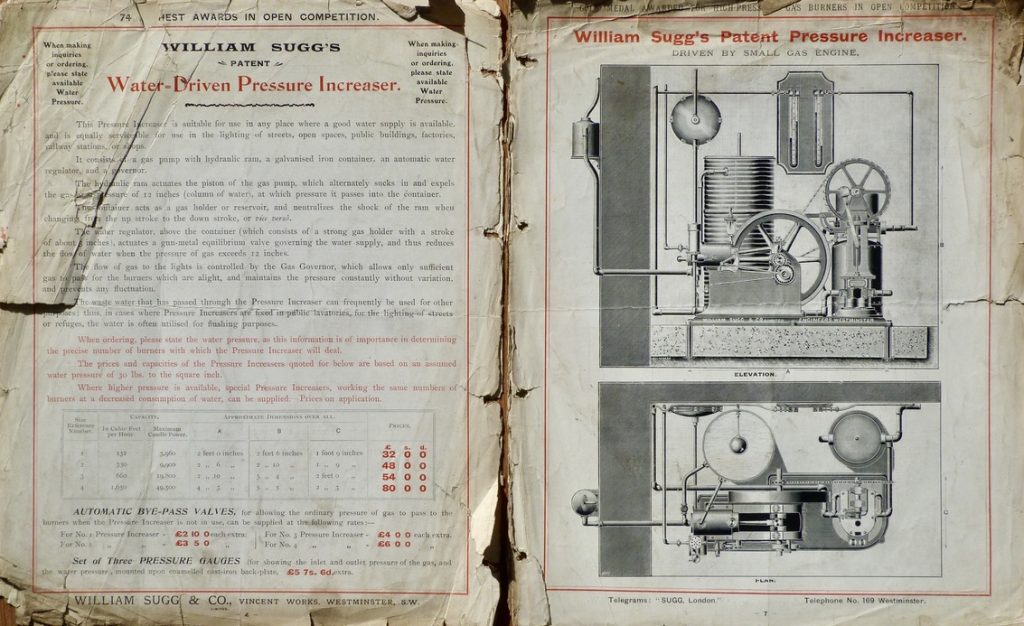
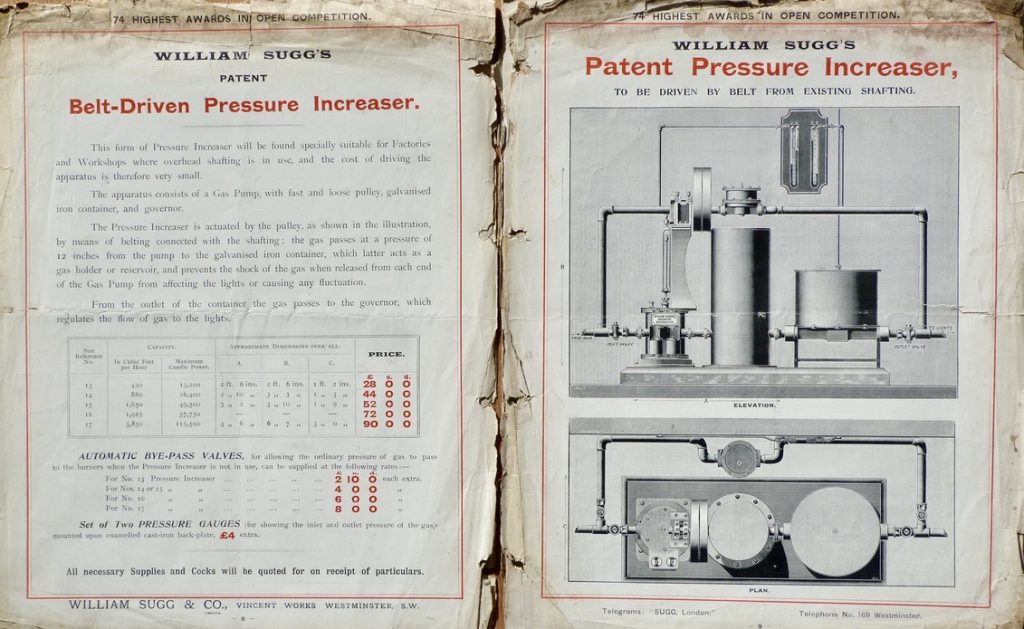
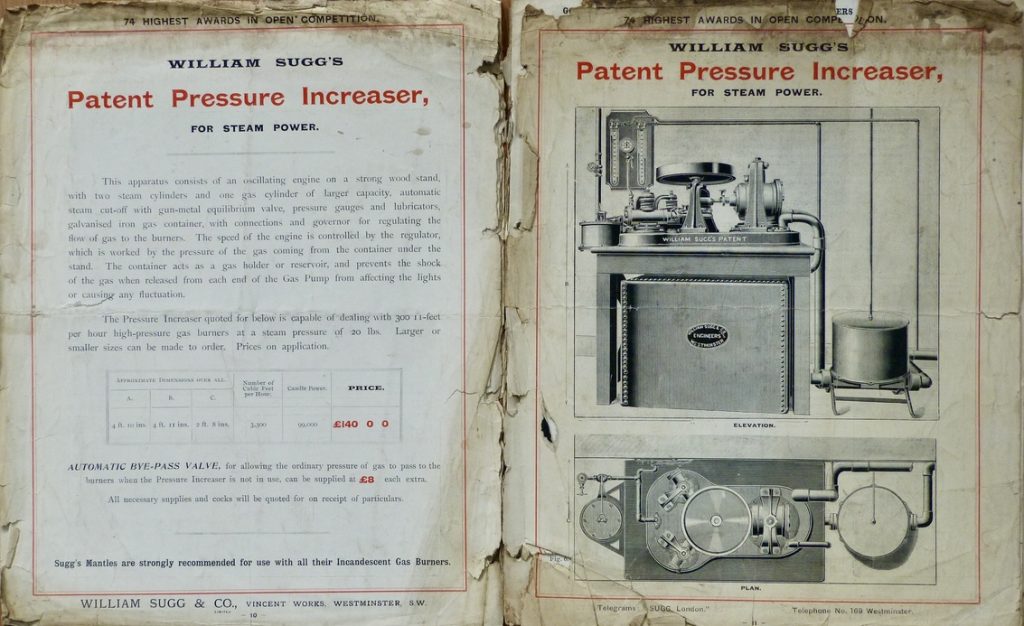
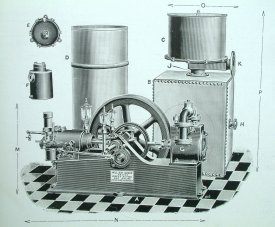
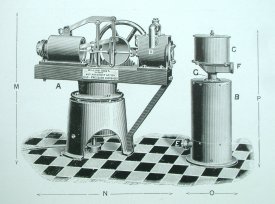
Two ‘Pressure Increasers’ – At the top is a gas engine and below is a hot air engine. Sometimes seen at steam engine rallies’ these little engines were used to improve the gas supply in commercial buildings and because they rotate quite slowly they will last almost for ever! (September 1908 catalogue)
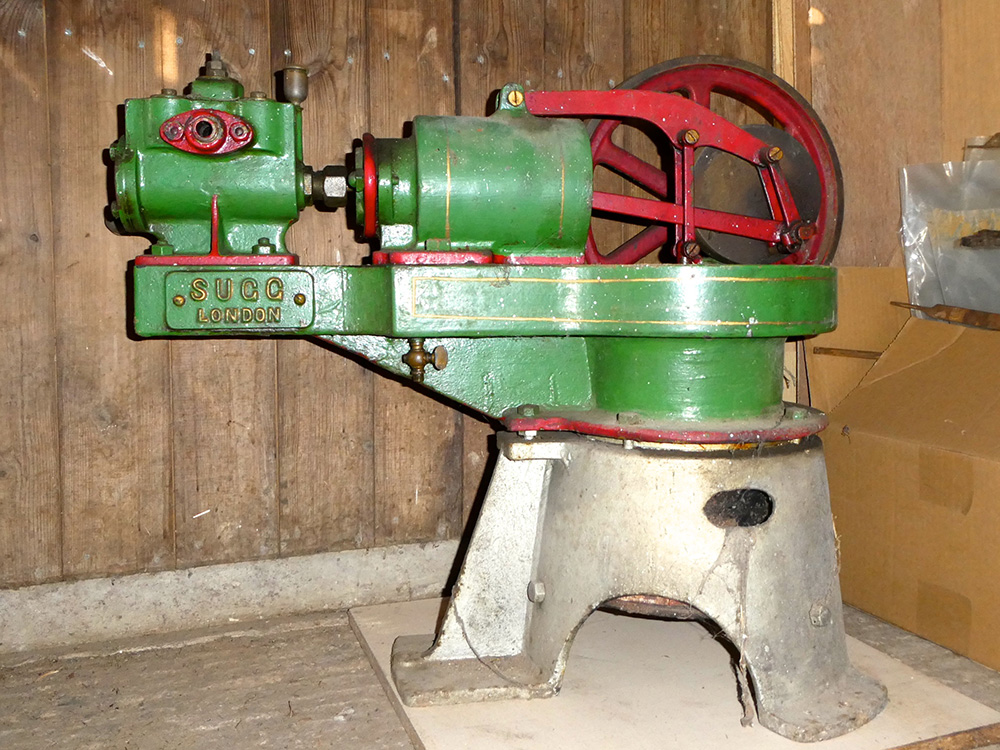
This hot air engine was found in the basement of a Woolworths Store in South Wales that was being closed many years ago. It had been in service providing an increase in pressure for gas lighting which most Woolworths used. The nameplate gave the owners the clue to contact the company and it was returned!
I later found out in 2021 from John Howard, an enthusiast in hot air engines, that this design is known as a Robinson Patent engine and the Sugg model may be badge engineered as I have now seen others carrying different names. A somewhat smaller model I believe can be seen running on U-Tube which demonstrates the slow speed and steady running that was ideal for the application of increasing gas supply pressure. Sometimes places like the Woolworths stores had a lot of Sugg gas lighting and it may be that the gas pressure was too low to provide a good supply across the whole store. so this engine could solve the problem.
You can see an engine running on U-Tube at https://youtu.be/qzjAt-vQQyk See below:
In his note to me John Howard said:
“I have attached an image from the example ‘Robinson’ sometimes exhibited in the Science Museum London, BELOW, as a cut-away example. The loose fitting vertical-acting ‘displacer piston’ can be seen filled with wire-wool as the heat recovery ‘regenerator material. The surprising thing is how thin the domed bottom heated surface cylinder wall is. However since the pressure differential was hardly ever approaching an atmosphere, its more than adequate. The piston seal grooves are well in evidence which reduce the bypass by aiding the pistons self-centring action. As you know the Stirling engine probably the closest approximation to the Carnot-Cycle engine, so as long as there is a sizeable temperature between the hot and cold ends of the displacer cylinder it will operate, even when your water boils.”
This was in response to my saying that when we ran the ex Woolworths store engine the water became steadily hotter and I had wondered if it would actually boil or would the engine stop because the hot and cold differential might not be sufficient but, as you see, he thinks not which must be true because these engines clearly worked for many years.
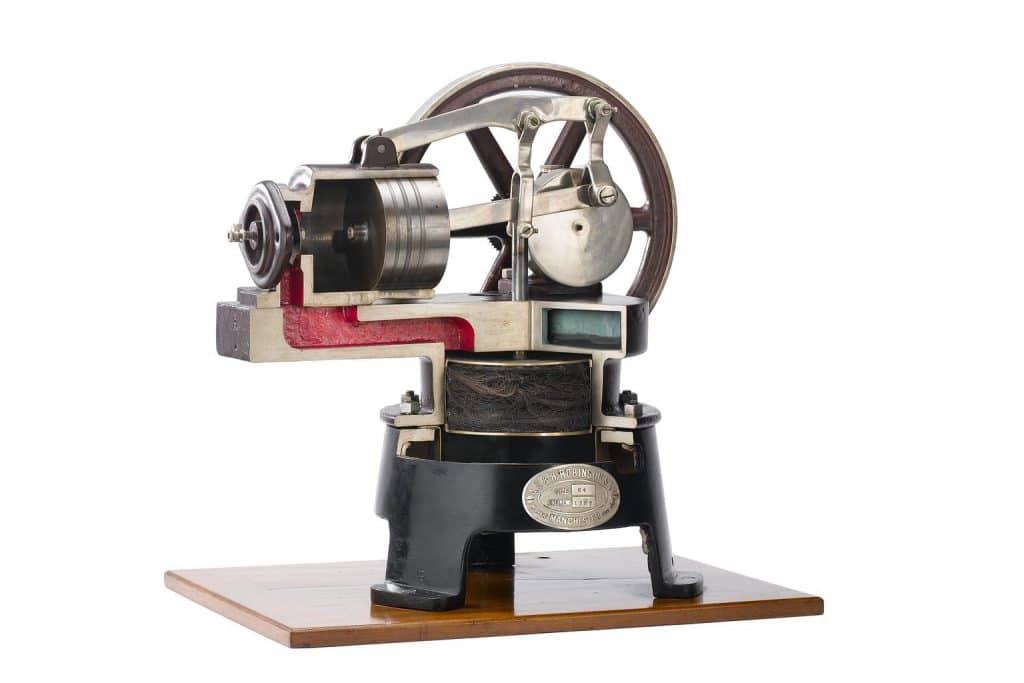
Copyright © Chris Sugg 2006-ON
Top of page
Back to Technical

2 responses
This is very attention-grabbing, You are an excessively professional blogger.
I have joined your rss feed and look ahead
to searching for more of your excellent post.
Additionally, I have shared your site in my social networks
Appreciating the time and effort you put into your blog and in depth
information you present. It’s awesome to come across a blog every once in a while
that isn’t the same unwanted rehashed material. Excellent read!
I’ve saved your site and I’m adding your RSS feeds to my Google account.